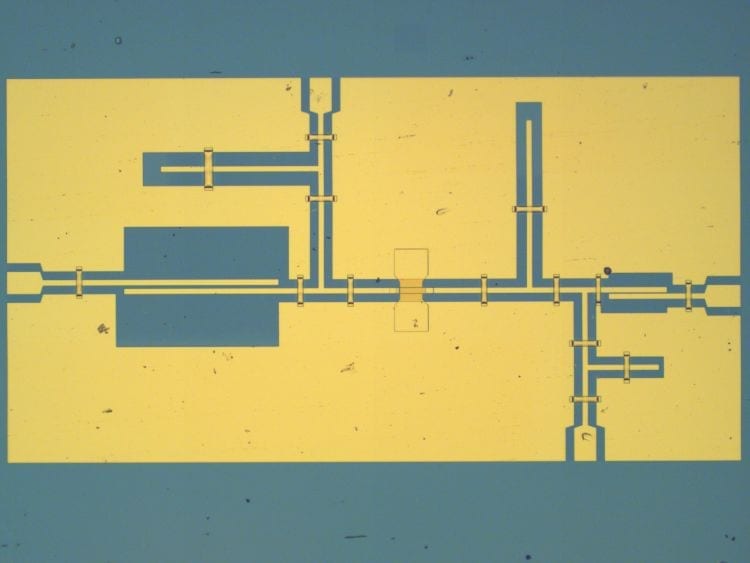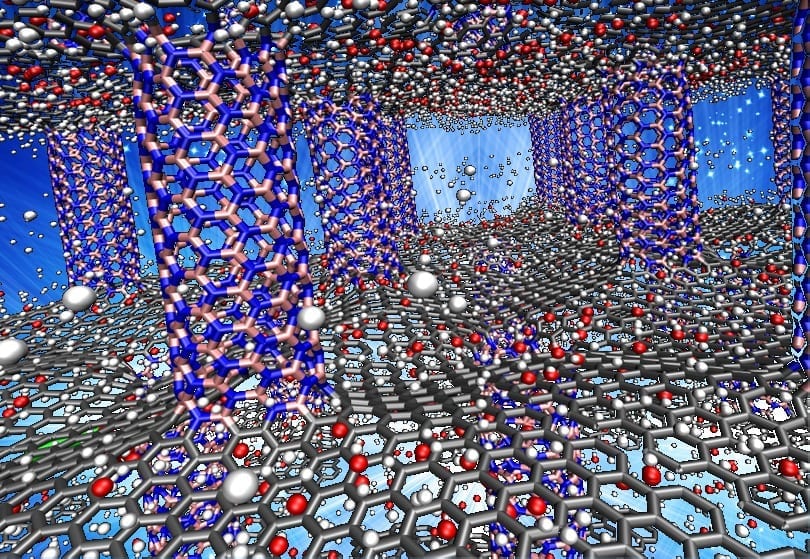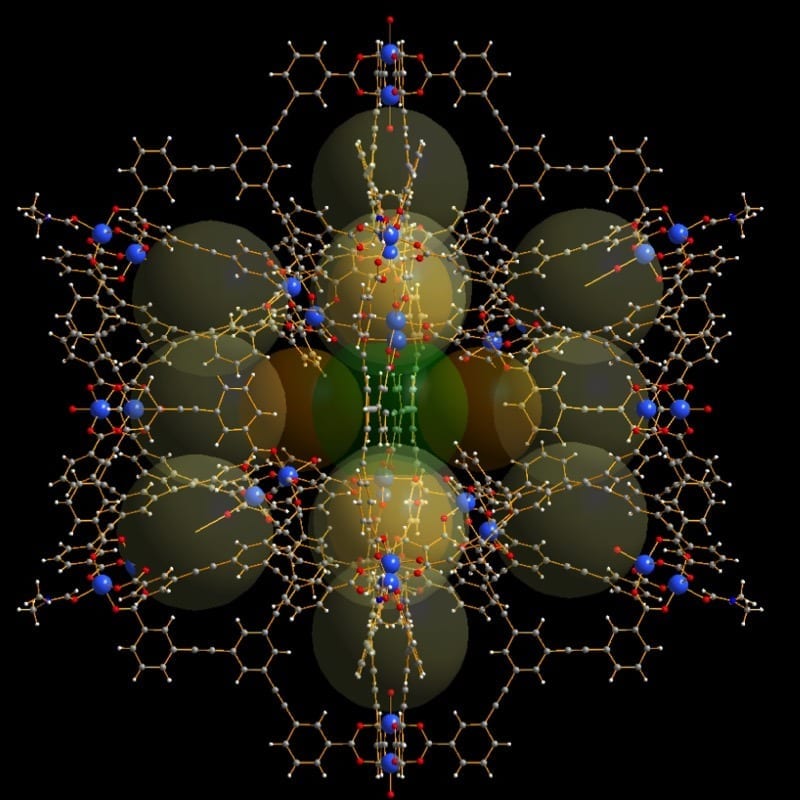
By utilizing terahertz waves in electronics, future data traffic can get a big boost forward. So far, the terahertz (THz) frequency has not been optimally applied to data transmission, but by using graphene, researchers at Chalmers University of Technology have come one step closer to a possible paradigm shift for the electronic industry.
Over 60 young researchers from all over the world will learn more about this and other topics as they gather in outside of Gothenburg, Sweden, to participate in this week’s summer school Graphene Study, arranged by Graphene Flagship.
It is the EU’s largest ever research initiative, the Graphene Flagship, coordinated by Chalmers, who organises the school this week, 25-30 June 2017. This year it is held in Sweden with focus on electronic applications of the two-dimensional material with the extraordinary electrical, optical, mechanical and thermal properties that make it a more efficient choice than silicon in electronic applications. Andrei Vorobiev is a researcher at the Terahertz and Millimetre Wave Laboratory at the Department of Microtechnology and Nanoscience – MC2 – as well as one of the many leading experts giving lectures at Graphene Study. He explains why graphene is suitable for developing devices operating in the THz range:

“One of the graphene’s special features is that the electrons move much faster than in most semiconductors used today. Thanks to this we can access the high frequencies (100-1000 times higher than gigahertz) that constitutes the terahertz range. Data communication then has the potential of becoming up to ten times faster and can transmit much larger amounts of data than is currently possible”, says Andrei Vorobiev (to the right).
Researchers at Chalmers are the first to have shown that graphene based transistor devices could receive and convert terahertz waves, a wavelength located between microwaves and infrared light, and the results were published in the journal IEEE Transactions on Microwave Theory and Techniques. One example of these devices is a 200-GHz subharmonic resistive mixer based on a CVD graphene transistor integrated on silicon that could be used in high-speed wireless communication links.
Another example, taking advantage of graphene’s unique combination of flexibility and high carrier velocity, is a power detector based on a graphene transistor integrated on flexible polymer substrates. Interesting applications for such a power detector include wearable THz sensors for healthcare and flexible THz detector arrays for high resolution interferometric imaging to be used in biomedical and security imaging, remote process control, material inspection and profiling and packaging inspection.
“Analysis show that flexible imaging detector arrays is an area where THz applications of graphene has a very high impact potential. One example of where this could be used is in the security scanning at airports. Because the graphene-based terahertz scanner is bendable you’ll get a much better resolution and can retrieve more information than if the scanner’s surface is flat,” says Vorobiev.
But despite the progress, much work remains before the final electronic products reach the market. Andrei Vorobiev and his colleagues are now working to replace the silicon base on which the graphene is mounted, which limits the performance of the graphene, with other two-dimensional materials which, on the contrary, can further enhance the effect. And Vorobiev hopes that he will be able to inspire the students participating in Graphene Study to reach new scientific breakthroughs.
“In the last fifty years, all electronic development has followed Moore’s law, which says that every year more and more functions will being applied on ever smaller surfaces. Now it seems that we have reached the physical limit of how small the electronic circuits can become and we need to find another principle for development. New materials can be one solution and research on graphene is showing positive results. Working with graphene-related research is about breaking new ground which involves many difficult challenges, but eventually our work can revolutionise the future of communication and that’s what makes it so exciting,” says Andrei Vorobiev.
Learn more:Graphene and terahertz waves could lead the way to future communication
The Latest on: Terahertz waves and graphene
[google_news title=”” keyword=”terahertz waves and graphene” num_posts=”10″ blurb_length=”0″ show_thumb=”left”]- Wonder Material 'More Remarkable' Than Graphene Has Medical Potentialon May 8, 2024 at 4:20 am
Borophene is already thinner and more conductive than graphene, and scientists have altered it to make it even more special.
- 'Better than graphene' material development may improve implantable technologyon May 6, 2024 at 7:01 am
Move over, graphene. There's a new, improved two-dimensional material in the lab. Borophene, the atomically thin version of boron first synthesized in 2015, is more conductive, thinner, lighter, ...
- Team demonstrates an ultra-broadband tunable terahertz absorber of graphene and hierarchical plasmonic metamaterialson April 1, 2024 at 12:56 pm
Compared to static passive physical systems, tunable metamaterials can dynamically manipulate electromagnetic waves ... terahertz absorber utilizing the unique properties of graphene and ...
- New type of tunable filter reveals the potential for terahertz wireless communicationson March 11, 2024 at 9:05 am
Electromagnetic waves in the terahertz frequency range offer many advantages for communications and advanced applications in scanning and imaging, but realizing their potential poses challenges.
- Terahertz technologies explainedon February 7, 2023 at 8:49 am
Terahertz (THz) technology refers to the use of electromagnetic waves in the terahertz (1 THz = 1012 Hz) region of the electromagnetic spectrum that covers the frequency range from roughly 0.1 to 50 ...
- Cutting-edge terahertz technologyon December 7, 2022 at 6:43 am
Terahertz (THz) radiation ... The QCL provides a powerful continuous-wave (c.w.) THz source, and the UTC-PD uses a photomixing technique to produce sub-THz waves for wireless communication.
- Terahertz imaging of graphene paves the way to industrialisation (IMAGE)on July 15, 2022 at 5:25 pm
Graphene Flagship researchers have developed a new measurement standard for the analysis of graphene and layered materials that could accelerate production and optimise device fabrication ...
- Research Resultson August 26, 2019 at 1:02 pm
The frequency around 1 THz between radio waves and light is called the terahertz band (or submillimeter waveband, far infrared), and has yet to be developed. Light sources and detectors that generate ...
- A Terahertz Modulatoron January 29, 2017 at 8:58 pm
Terahertz waves are the electromagnetic radiation that lies in that area between radio frequencies and infra-red light. You might expect that since science has delivered so many breakthroughs in ...
- terahertz waveson January 28, 2017 at 4:00 pm
Terahertz waves are the electromagnetic radiation that lies in that area between radio frequencies and infra-red light. You might expect that since science has delivered so many breakthroughs in ...
via Google News and Bing News










